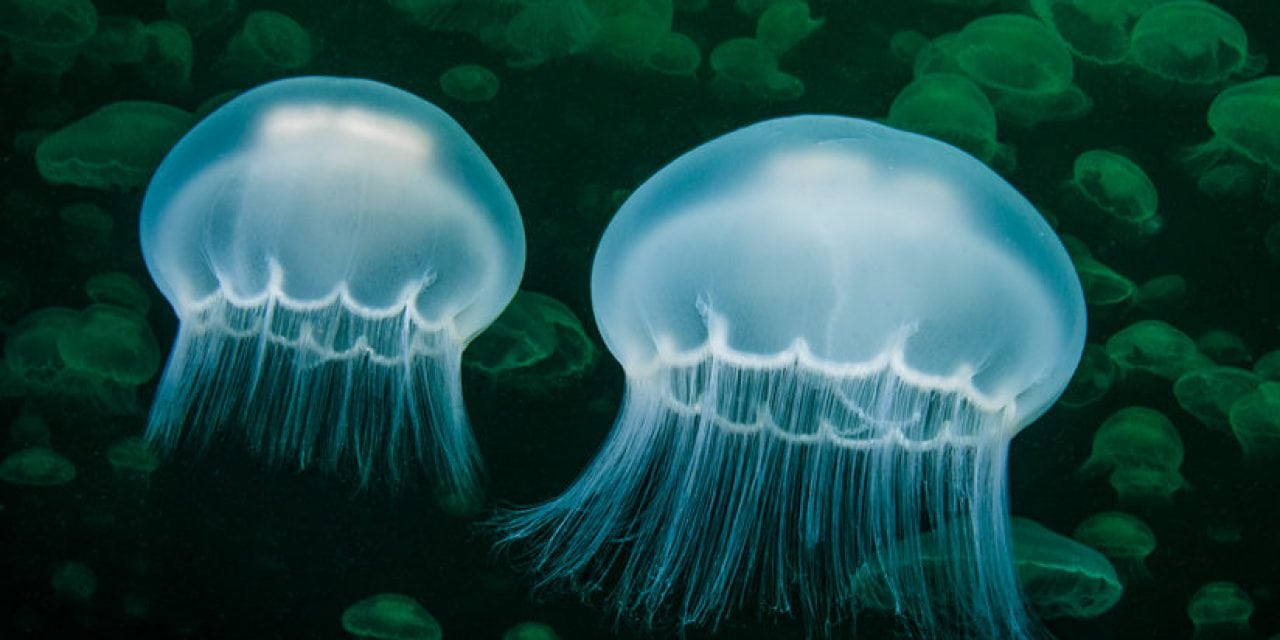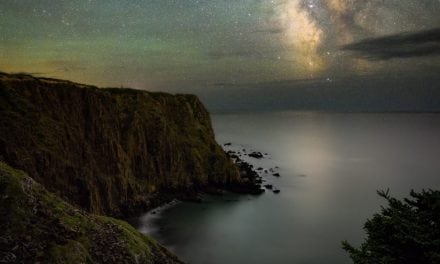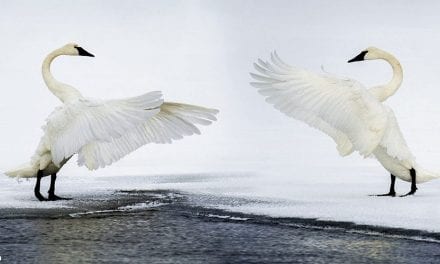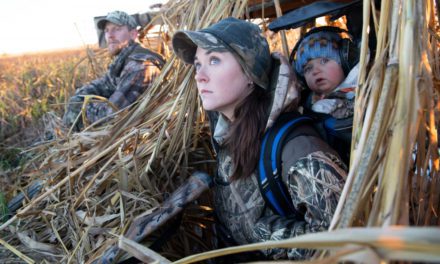
I am an underwater photographer and feel lucky to be one. Ever since I decided I wanted to seriously pursue photography, I did so with the idea to use it as a vehicle to work in ocean environments around the world. Before photography, I went to college to study marine biology. Whether I chose the sciences or the arts, I just had to work in, around, with and for the oceans. That’s where my heart was, and I had to follow it. I also fell in love with photography after changing from the sciences to the arts, so I had two passions once my career got moving.
I feel lucky because, in addition to falling in love with photography, time has proven that photography was the right choice to use as a vehicle to work outdoors and to travel. I’ve experienced coral reefs around the world, kelp forests and ocean life in a much broader capacity than if I had gone down that other path. I am by no means disparaging the sciences; I just think it was the right choice for my kind of brain.
My choice has granted me the opportunity to dive in islands throughout the South Pacific, the Caribbean, the Sea of Cortez, the Gulf of Mexico, along the coasts of California and Baja California, in the Great Lakes and in the Inside Passage of Alaska and British Columbia. I say without hesitation that my favorite place to work—that stands out from all my travels and diving—is the Inside Passage through southeast Alaska and British Columbia. I feel luckiest when I’m diving there.

Inside Passage: A Network Of Opportunities
The Inside Passage is a network of island passages that extends from Olympia, Washington, north through British Columbia, and along Alaska’s Panhandle as far north as Skagway. The passage was named and defined (loosely defined) not for its ecology, wildlife or any natural features. Rather, it offered a safe network of passages for ships looking to avoid bad weather. The routes are lined with ports and small towns filled with colorful people, and without fail you’ll find interesting taverns everywhere you stop. But I warn you, if you ever come across a bartender trying you sell you some smoked salmon-infused vodka, just kindly and respectfully turn it down. Yes, that is a real thing up there.
Access for diving is not the easiest in the Inside Passage. Up until a few years ago, I led expeditions on a live-aboard vessel called the Nautilus Swell, which is a lovely restored 85-foot tug. Although the Swell would run through British Columbia and Alaska, I booked her exclusively for trips trekking through southeast Alaska. For my British Columbia diving, I would always book a resort called God’s Pocket, which is an excluded hideaway tucked into a small cove on Hurst Island, just off of the northern tip of Vancouver Island.
Sadly, the Nautilus Swell is no longer operating dive trips in that part of the world. There are day boats you can get out of Juneau, Sitka and other places, but none of them provide the reach into the remote and exciting locations like the days of live-aboard diving. God’s Pocket, on the other hand, is alive and well, and I have plans to visit it again and again in the years ahead.
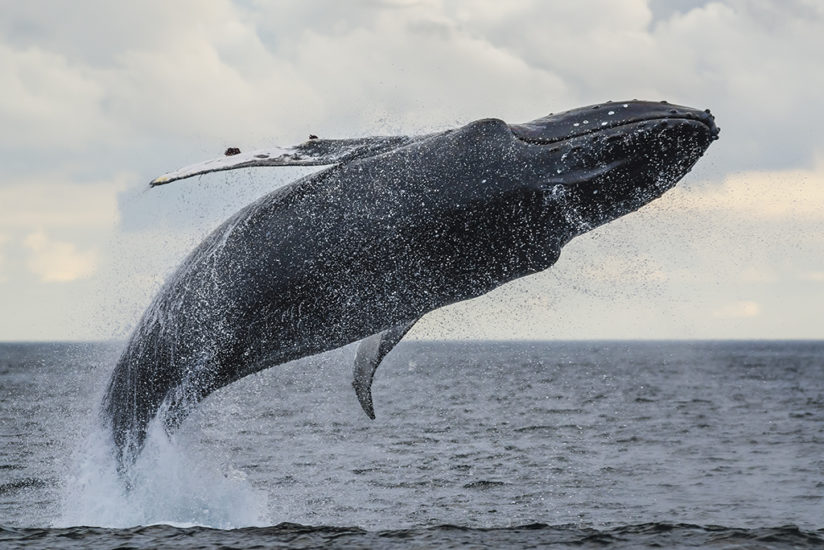
Bearing this in mind, the difficulty in accessing this part of the world is in part why it’s so great to visit. Don’t get me wrong; the Inside Passage has plenty of cruise ships, tourism, fishing fleets, ferry systems, cargo vessels and much more. Industry is everywhere. But regardless of the ever-present human element, the ecology there feels alive, intact, and when I’m there, I feel removed from the hustle and bustle of daily routines and the complications of normal life.
The wildlife is everywhere. There are bears, wolves, eagles, whales, dolphins, sea otters, harbor seals and stellar sea lions, and the life underwater is like nothing else anywhere in the world. The waters of the Inside Passage are cold and the visibility often challenging, but because the waters are nutrient rich, life is abundant, and everything grows big there. It’s truly a cold-water paradise that anyone would be lucky to experience.
Smudges
One of the prime destinations on our trips to southeast Alaska was to a dive site we affectionately called Smudges. Smudges was tucked into a narrow canyon that was likely carved out by an ancient glacier. There was not much life inside the canyon; certainly there were no reefs, but there were “smudges.” So named by one of the Swell’s boat captains, the trick to scouting this place was to transect our way through the canyon at certain times of the year while looking over the side of the boat and keeping an eye out for patches of “smudgy” looking water.

What we were looking for, and what made these smudgy patches, were blooms of sea jellies. Specifically, they were huge swarms of moon jellies that numbered in the thousands, possibly tens of thousands. Mixed in with the moons were lion’s mane jellies, sea nettles, red-eyed medusae and more.
Thankfully, the moons were nothing to worry about, but we did need to keep a watch out for the sea nettles and lion’s mane tentacles—they sting. The lion’s mane jellies have the distinction of being the longest animal in the world. Yes, you read that right. They can grow longer than a blue whale, which is the heaviest and the biggest animal, but the lion’s mane is known as the longest, because their extremely long and almost translucent tentacles can trail far behind their bodies, acting like ghost nets in the water column, grabbing onto anything crossing their path. This includes unsuspecting underwater photographers. But I promise, it’s worth it.
It’s a phenomenal thing to be swimming through a large patch of jellies in the remote corners of Alaska. I’d sacrifice a few stings any day for such a dive. They are simple animals but undoubtedly beautiful and graceful.
The Giant Pacific Octopus
The first time I saw a giant Pacific octopus, I was diving in on a site called Dillon Rock, off the northern end of Vancouver Island in British Columbia, Canada, and I was very nervous. I had encountered numerous small octopus before, but giant Pacific octopus are big, and this one was enormous. Its mantle alone was the size of two basketballs, and I would guess its reach from tentacle tip to tentacle tip was around 3.5 to 4 meters. But I suspect my nervousness was just an effect of the unfamiliar.
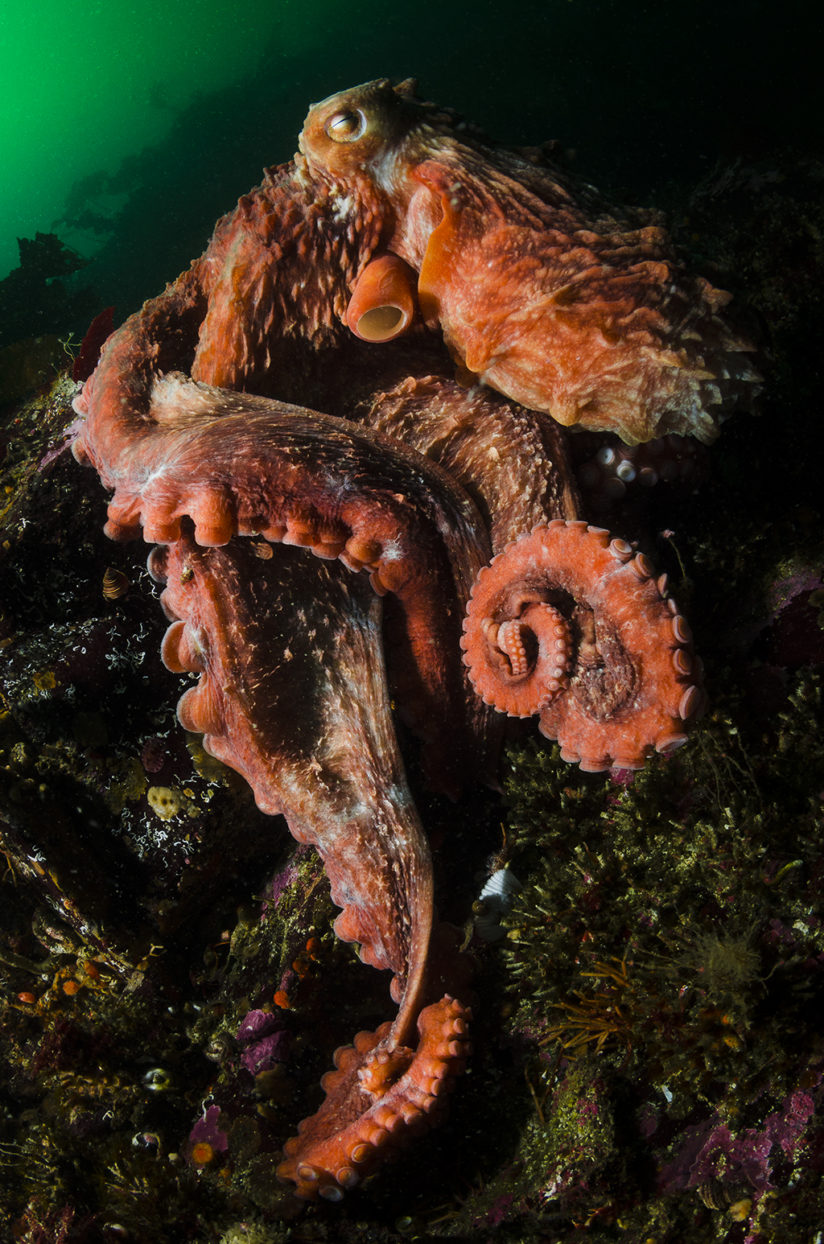
GPOs, as they are called, are smart, they can be unpredictable, and they are very strong—like “rip your scuba mask off with no problem” strong. Of course, like all fears of unfamiliar things, mine quickly dissipated as I got a feel for the behavior of this magnificent animal. While other small octopus I had previously encountered tended to hide or scurry away, this one seemed unfazed at my presence and even curious about my camera strobes. My nervousness turned to total excitement before long, and to this day that dive, with that GPO, is one of my favorite animal encounters of my life.
Reef Life
It hurts me that I can only use a few hundred words in this article to talk about the reef life found in the Inside Passage. It can be as colorful, dynamic and rich as anything you would ever find in the tropical waters of the South Pacific. But the reefs there are different. Believe it or not, there are cold-water corals, and plenty of them in the Inside Passage. The real difference is how the reefs are structured.
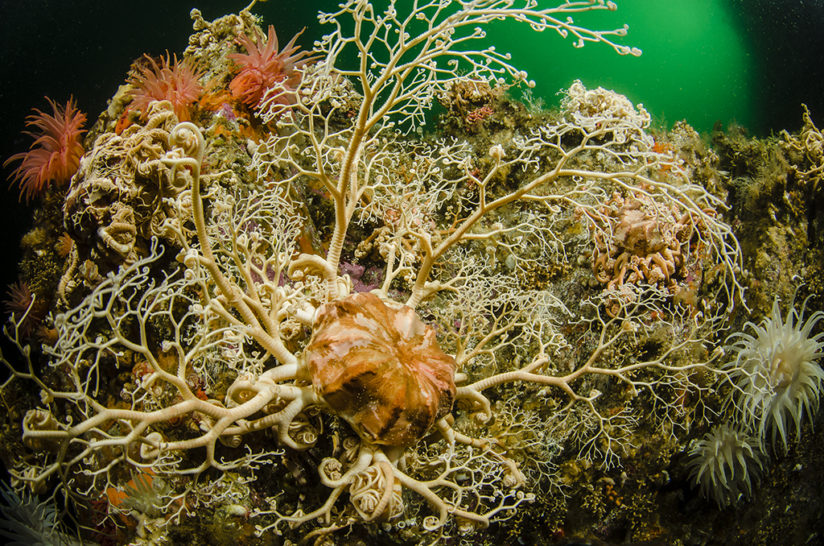
Speaking generally, there are organic, geologic and artificial reefs. An example of an artificial reef would be something like a shipwreck or other man-made sunken structure. Organic reefs can be enormous calcium carbonate structures created through biological processes from a variety of plants and animals. Tropical coral reefs are generated in this way. What we typically find in the Inside Passage is quite different due to its topography and geology. Instead of long sandy beaches, the coastlines of the Inside Passage are made up of hard rocky shores, and underwater life clings to the rocks on every exposed inch and in every nook and cranny available.
Glacier Day
The farther north you trek in the Inside Passage, the colder the climate. While glaciers are all but gone in the southern parts, they can still be found to the north. Sadly, most of these glaciers are receding at rapid rates as a result of shifts in climate, but they are there, they are impressive, and a trip would not be complete without a visit to one of Alaska’s glacial fjords. As you approach the glaciers, the icebergs are usually peppered with dozens of harbor seals that live in fjords year-round. These fjords are well-protected and typically have an abundance of food.
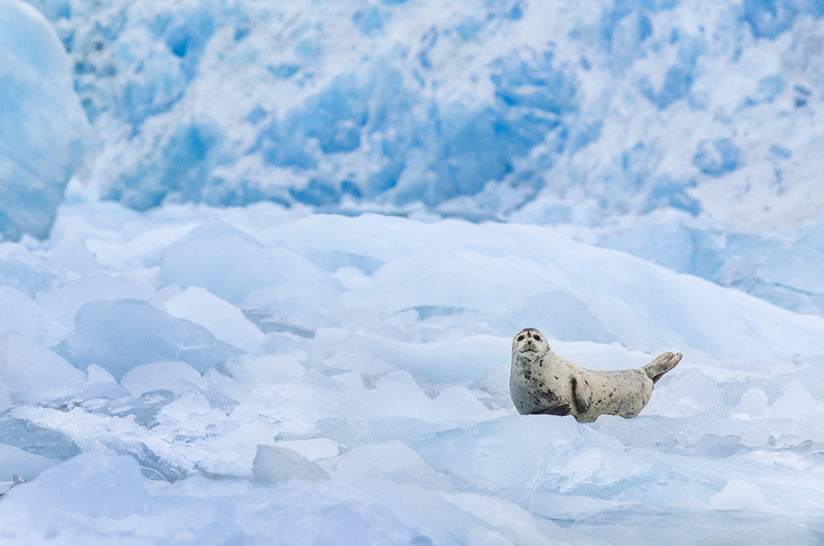
To reminisce about my days on the Swell again, Glacier Day was one of my favorite experiences on our trips. We would put away such foolish pursuits as scuba diving for the day and spend our time instead exploring the fjords. What made this day so much fun, in addition to the beauty of the glaciers and the life, was that everyone on the boat would dress in our drysuits, jump in the water, and proceed to swim and play king of the mountain climbing on icebergs. Of course, the boat crew served us cocktails amidst all this mayhem. What a fun day!
Shapes Of Life
What truly defines the Inside Passage? Even though the routes that run through this network of passageways were named by and for the many boats that migrate through, the Inside Passage was shaped by other means. This part of the world was forged not by anything man has done but instead by eons of geologic and biological processes. The mountains were created by ancient volcanic activity and shifting of continental plates. The canyons that extend deep into the ocean were carved out by rivers of water and ice over hundreds of thousands or millions of years, and encrusted with an ever-evolving flood of life that clings to everything.
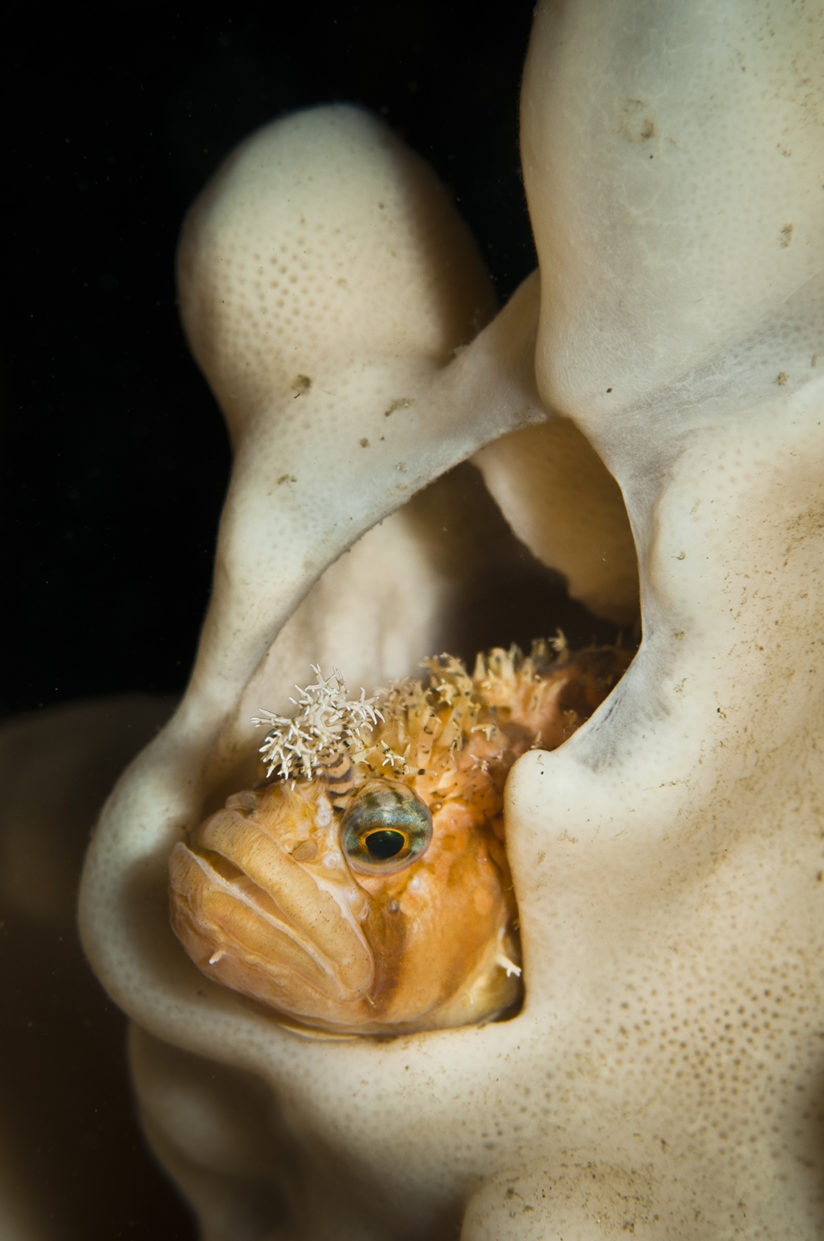
Let me suggest, as much effort as it might seem, that you consider experiencing the life and landscapes both above and below the water line in this part of the world. I promise if you do, you will walk away feeling lucky you’ve experienced it.
YOU MIGHT ALSO LIKE
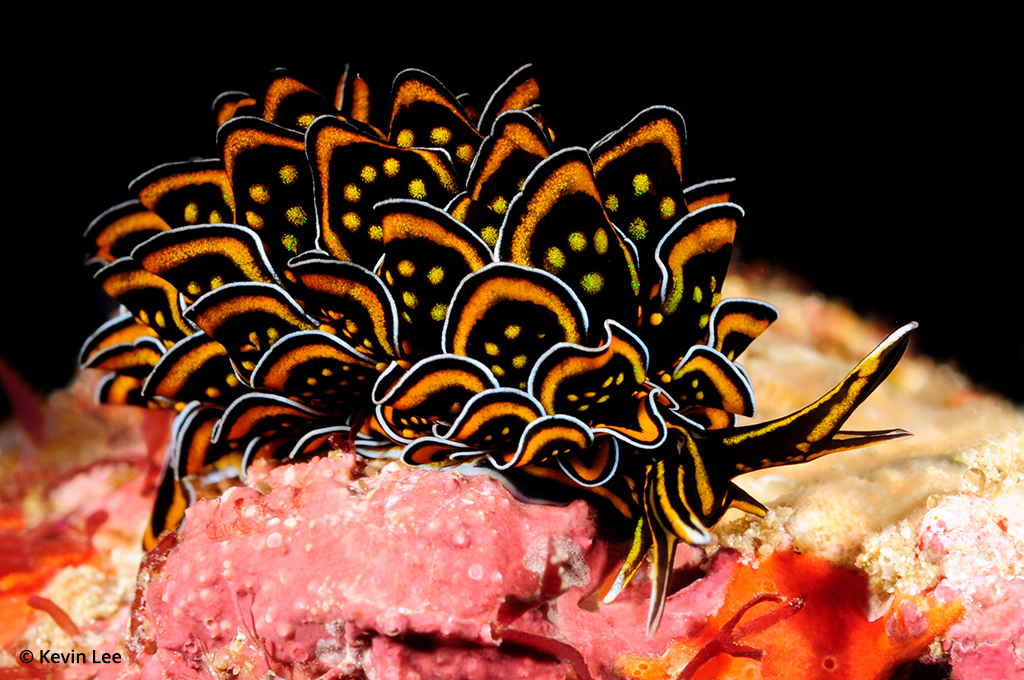
Denizen Of The Deep
Underwater photographer Kevin Lee on his passion for documenting marine biology, especially macro subjects. Read now.
The post Feeling Lucky In The Inside Passage appeared first on Outdoor Photographer.

